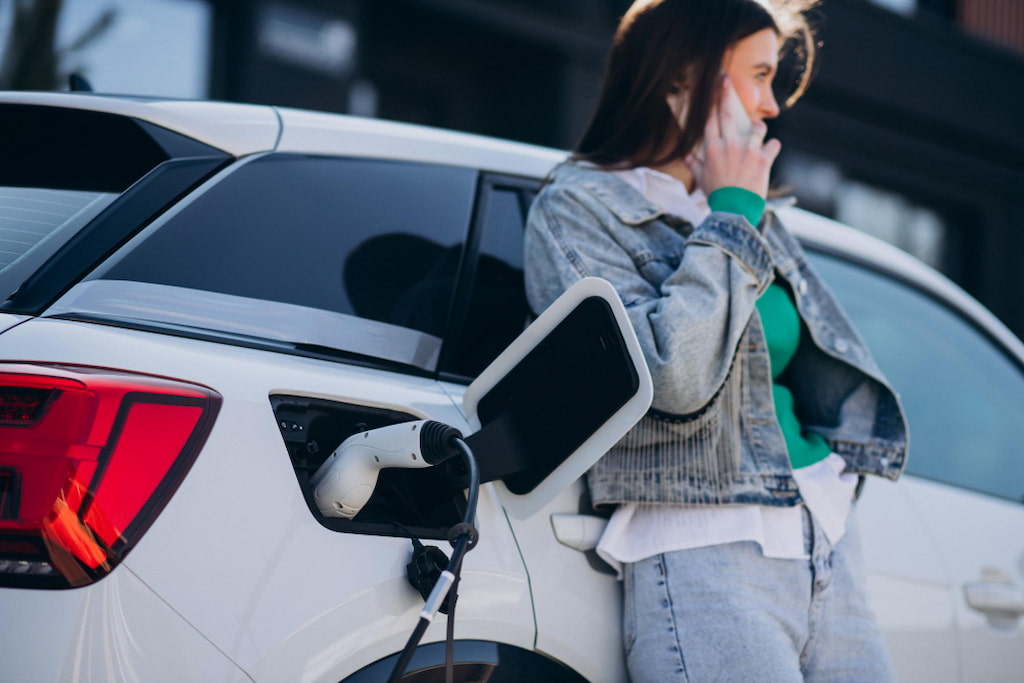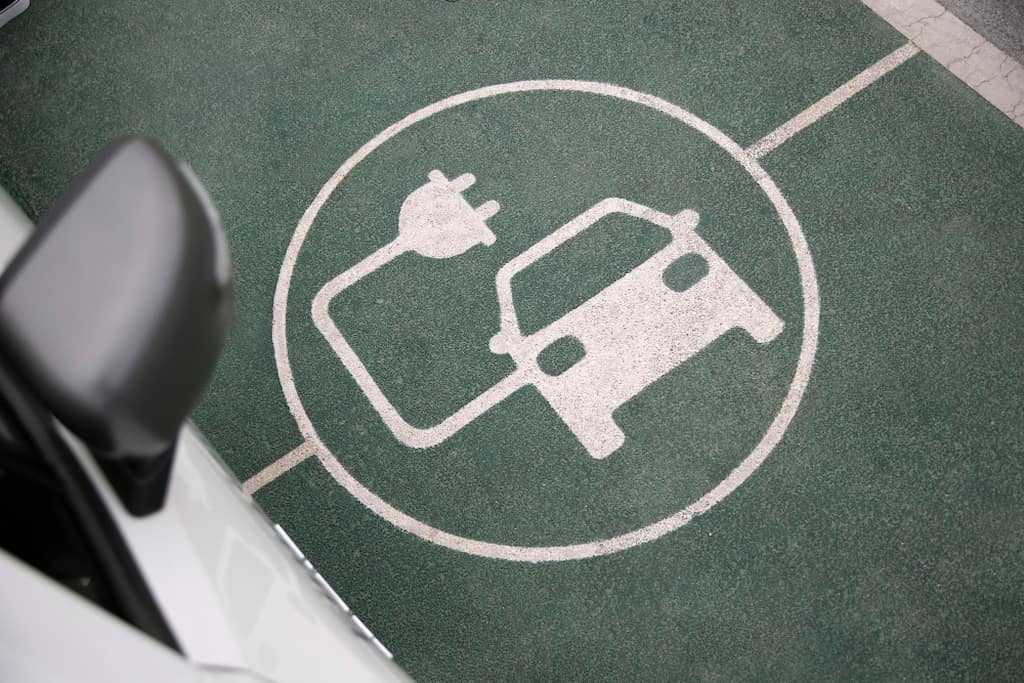
La movilidad eléctrica avanza a gran velocidad en España, pero todavía existen dudas frecuentes: ¿cómo se carga un coche eléctrico realmente? ¿Qué diferencias hay entre hacerlo en casa o en la calle? ¿Cuánto cuesta y cuánto tarda? En esta guía de Activacar como especialistas en EV chargers installation We will respond step by step, with verified data and a clear approach for both home and business users.
Cómo se carga un coche eléctrico paso a paso
Cargar un coche eléctrico es un proceso sencillo, aunque conviene conocer las opciones disponibles para optimizar tiempo y costes. Estos son los pasos básicos:
Connect the vehicle
- Usa el cable correspondiente: Schuko (enchufe doméstico convencional) o Mennekes (el más habitual en cargadores públicos y domésticos de pared).
Elige el tipo de recarga
- En casa: enchufe convencional o punto de recarga (más seguro y eficiente).
- En la calle: puntos semirrápidos, rápidos y ultrarrápidos.
Start reloading
- At home, the process starts when you plug in. In public spaces, you will need to use an app or card.
- At home, the process starts when you plug in. In public spaces, you will need to use an app or card.
Supervisa el proceso
- Los cargadores inteligentes permiten monitorización en tiempo real desde el móvil.
Finish safely
- Desconecta el cable, guarda el conector y, en puntos públicos, sigue las instrucciones de la app.
Recharge types and comparison
To choose the system that best suits your needs, it is important to know what options are available. Here we show you a clear comparison between the different charging methods, with updated times and prices in Spain in 2025.
| Tipo de recarga | Average power | Tiempo carga (40 kWh) | Coste estimado |
|---|---|---|---|
| Enchufe doméstico Schuko | 2,3 kW | 18–24 h | 6 € aprox. |
| Cargador doméstico Wallbox | 3,6–11 kW | 4–12 h | 4–6 € |
| Estación pública AC | 22 kW | 2–3 h | 10–24 € |
| Estación rápida DC | 50 kW | 30–60 min | 12–32 € |
| Estación ultrarrápida DC | 100–350 kW | 10–20 min | 15–40 € |
En casa es más barato y cómodo. Los cargadores rápidos y ultrarrápidos son ideales para viajes largos o recargas puntuales.
How to charge an electric car at home?
Charging your electric car at home is the most convenient and economical option. Installing an electric car charger at home requires a small initial investment, but allows you to save on each recharge. We explain how to do it step by step:
Assess the existing electrical installation
- In many households it is not necessary to increase the power, but in older dwellings a revision may be required.
- In many households it is not necessary to increase the power, but in older dwellings a revision may be required.
Buy a suitable charger
- Models are available from €500, although those with Wi-Fi or smart management can exceed €1,500.
- Models are available from €500, although those with Wi-Fi or smart management can exceed €1,500.
Hire a professional installation
- By law, this must be done by an approved installer, especially if you want to qualify for public subsidies.
- By law, this must be done by an approved installer, especially if you want to qualify for public subsidies.
Apply for the MOVES III Plan
- The government subsidises up to 80 % of the investment if you meet certain requirements.
- The government subsidises up to 80 % of the investment if you meet certain requirements.
Take advantage of night fares
- Sign up for a tariff with hourly discrimination to save up to 50 % per recharge.
Approximate prices for charging an electric car according to type of installation
If you are considering installing a charging point, whether at home, in a communal garage or in a company, it is important to have clear figures. Below, we show you a table with approximate average prices for each environment, considering both the cost of the charger and the installation. The data is updated to 2025 and verified with professional installers in the sector.
| Type of installation | Device (charger) | Installation | Total before aid |
| Single-family house | 7.4 kW wallbox | Standard installation+legalisation included | 1 500-2 000 € |
| Communal garage (per individual parking space) | Charger adapted to standards | legalisation included | 1 700-2 200 € |
| Company / fleet (1-2 fast chargers) | 1 500-3 000 € (per unit) | 2 000-5 000 € | 3 500-8 000 € |
| Company / fleet (multiple chargers + management) | 3 000-10 000 € (depending on the amount) | 5 000-15 000 € | 8 000-25 000 € |
Don't forget that, thanks to the MOVES III Planyou can recover on the 70 % and in enterprises around 30% of the total costThe use of electric vehicles, both in individual and collective installations, makes it very easy to make the move towards efficient electric mobility.
What do you need to know to install a charger in a communal garage?
If you live in a community of neighbours, you can also carry out the installation of recharging points for communal garages. The current regulations in Spain (Ley de Propiedad Horizontal) allow you to do this without the need for approval by the community. You just have to notify it in writing beforehand.
Before starting, it is useful to know the key points:
- PermitsYou do not need authorisation, but you do need to inform the president or administrator.
- MeasurementYou can connect to the meter of your home or install a separate meter.
- Civil worksIf your place is far away from the electricity board, the cost may increase.
- CostsThe installation of recharging points for communal garages costs around €1,800 per space, including equipment, work and labour.
In addition, many installers already manage MOVES grants for you, and offer solutions tailored to the needs of the building.
Consejos para optimizar la carga
- Programa la recarga en horario valle para ahorrar.
- Mantén el nivel de batería entre el 20 % y el 80 % para alargar su vida útil.
- Usa siempre cargadores homologados y revisa periódicamente el estado del cable.
- Si viajas, planifica paradas en cargadores rápidos usando apps de localización.
FAQ
¿Cuánto tiempo tarda en cargarse un coche eléctrico
Depende de la potencia: de 10–20 min en carga ultrarrápida a más de 18 h en enchufe doméstico.
¿Cuánto cuesta cargar un coche eléctrico en casa?
En 2025, entre 4 y 6 € por una batería de 40 kWh, dependiendo de la tarifa contratada.
¿Es mejor cargar en casa o en puntos públicos?
En casa es más económico y cómodo; los puntos públicos son útiles en viajes o emergencias.
¿Existen ayudas para instalar cargadores en 2025
Sí, el Plan MOVES III subvenciona hasta el 80 % en particulares y el 30 % en empresas.
Conclusion
Charging an electric car is a simple, safe and increasingly accessible process. Visit how to charge an electric car step by step allows you to make better decisions, optimise your costs and contribute to more sustainable mobility.
The EV chargers installationThe new system, both in private homes and in communal garages, is easier today thanks to subsidies, the maturity of the market and the experience of professionals in the sector. If you are thinking of installing an electric car charger at homeThe time is now: you will save, you will gain comfort and you will be prepared for the future.





